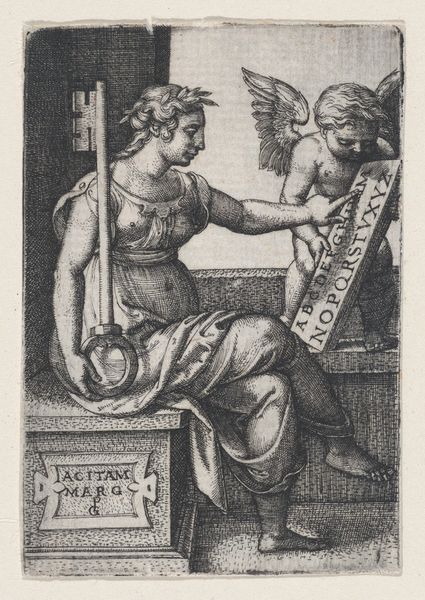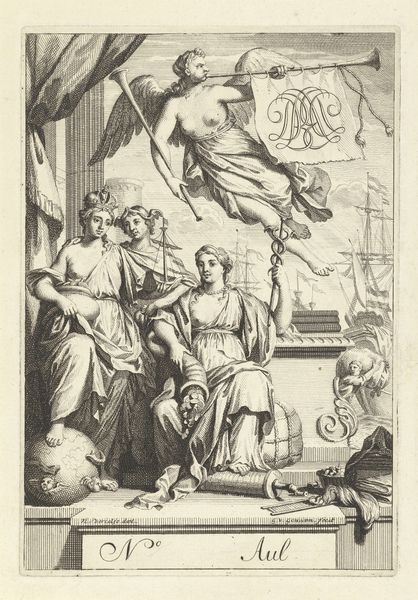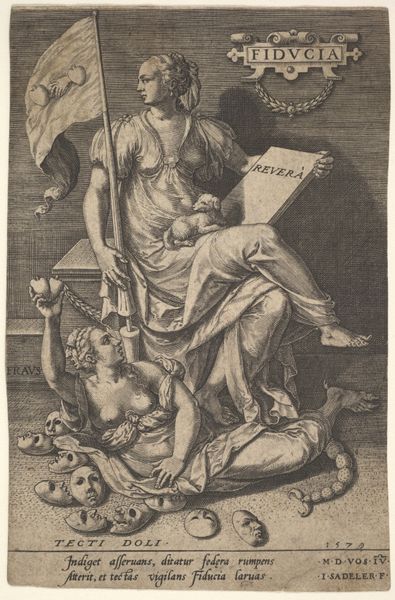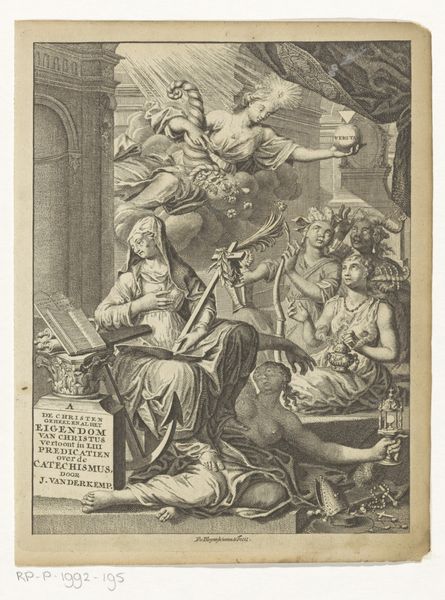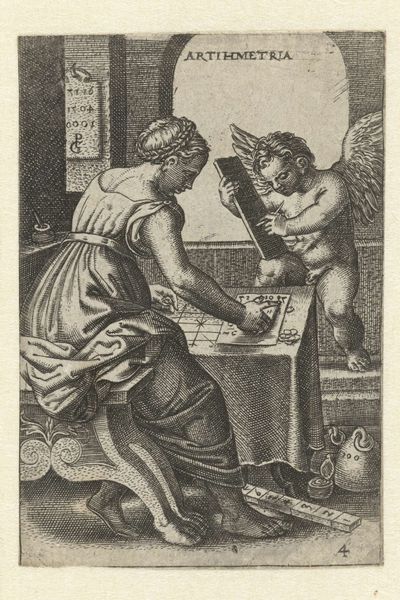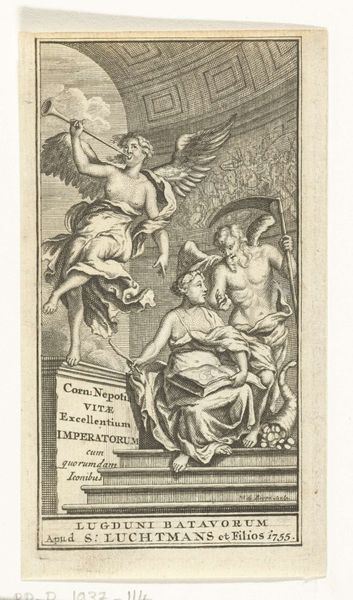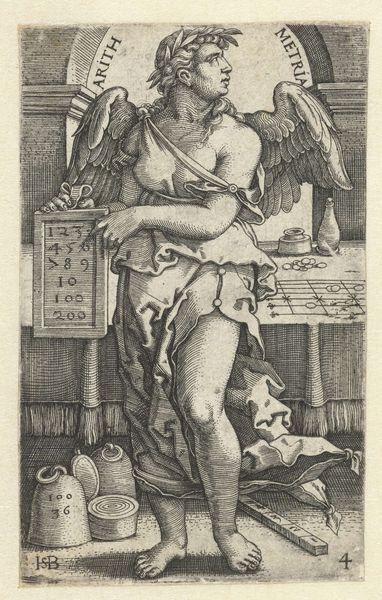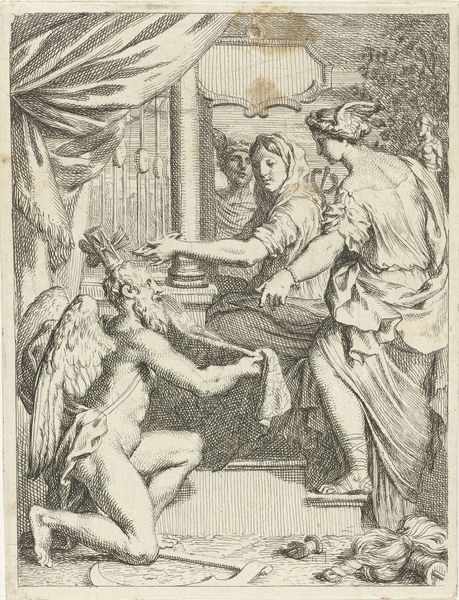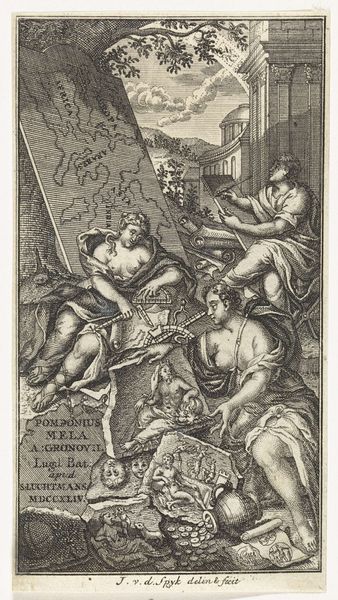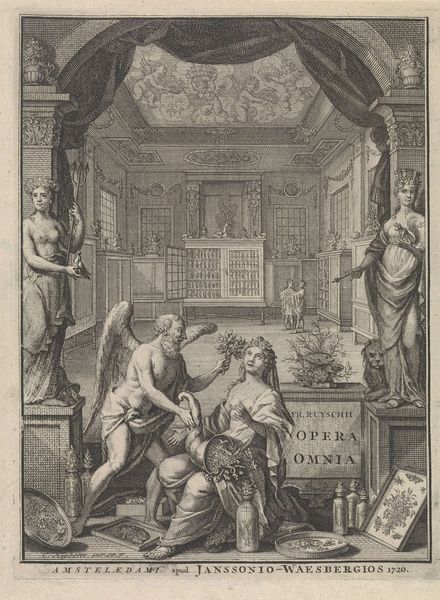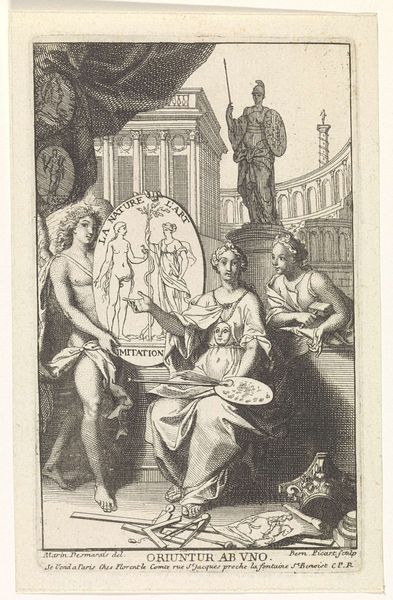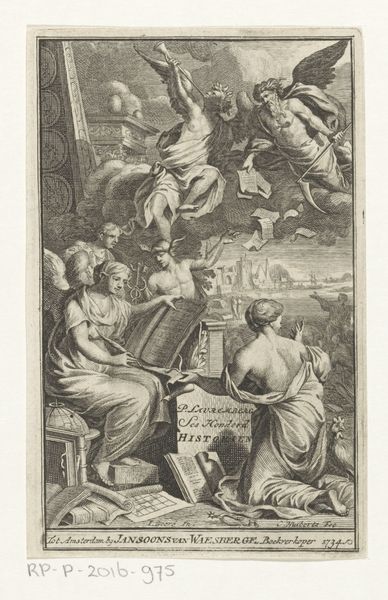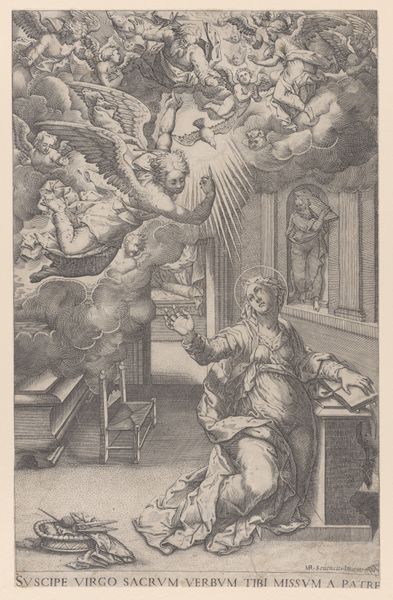
drawing, print, engraving
#
drawing
#
allegory
# print
#
figuration
#
history-painting
#
northern-renaissance
#
engraving
Dimensions: Sheet: 2 15/16 × 2 in. (7.4 × 5.1 cm)
Copyright: Public Domain
Georg Pencz made this print, a “Copy of Grammatica, from ‘The Liberal Arts,’” around 1540, using engraving. Engraving is an intaglio process, meaning that the image is incised into a metal plate, traditionally copper, using a tool called a burin. Look closely at the image. Notice the fine, precise lines that create the figures and details. The engraver would have painstakingly pushed the burin through the metal, using the varying pressure to create different depths and widths of lines. Ink would then be applied to the plate, filling the engraved lines, and the surface wiped clean. Finally, paper is pressed against the plate, transferring the ink and creating the print. The skill required for engraving demanded a highly trained artisan, reflecting a significant investment of time and labor. This print, like others in the series, celebrates the value of knowledge and education, but it also speaks to the complex relationship between craft, skill, and the wider social context of 16th-century Europe. The print’s fine lines and delicate details remind us that materials, making, and context are key to understanding the full meaning of any artwork.
Comments
No comments
Be the first to comment and join the conversation on the ultimate creative platform.
